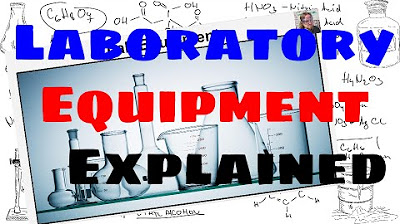Molecular Solids
Summary
TLDRIn this chemistry essentials video, Mr. Andersen explores molecular solids, which consist of interconnected molecules such as ice, sugar, and dry ice. He explains the distinction between strong intramolecular forces that create insulators and weak intermolecular forces that lead to low melting points. Examples include ethylene and amino acids, which can form polymers like polyethylene and proteins, respectively. The video highlights the significance of these structures in both commercial applications and biological processes, emphasizing their unique properties and the role of molecular solids in everyday life.
Takeaways
- 🌟 Molecular solids are composed of interconnected molecules, including substances like ice, dry ice, methane, sugar, fullerenes, and sulfur.
- 🧊 Nonmetals, diatomic elements, and compounds can form molecular solids; examples include sulfur, solid hydrochloric acid, and ice.
- ⚡ Molecular solids have strong intramolecular forces, making them insulators due to the lack of free electrons.
- 🔥 These solids exhibit weak intermolecular forces, resulting in low melting points compared to other solid types.
- ❄️ Ice, as a molecular solid, has hydrogen bonding which contributes to its weak intermolecular forces and low melting point.
- 💧 Dry ice is a solid form of carbon dioxide, exhibiting strong covalent intramolecular bonds and weak intermolecular forces.
- 🔗 Polymers can be formed from molecular solids; for example, ethylene can be linked to create polyethylene, a common plastic.
- 🔬 Amino acids, which are the building blocks of proteins, can be connected to form polypeptides, showcasing the importance of molecular solids in biology.
- 🧪 The structure of molecular solids influences their properties, such as being insulators and having low melting points.
- 📏 Understanding the properties of molecular solids can help in creating models that demonstrate their characteristics effectively.
Q & A
What are molecular solids?
-Molecular solids are solids made of interconnected molecules, such as ice, dry ice, methane, sugar, and fullerenes.
What types of substances can form molecular solids?
-Molecular solids can be nonmetals, diatomic elements, or compounds. Examples include sulfur (a nonmetal), solid hydrochloric acid (a diatomic molecule), and ice (a compound).
What are the key characteristics of intramolecular and intermolecular forces in molecular solids?
-Molecular solids have strong intramolecular forces within the molecules, which lead to their insulating properties, and weak intermolecular forces that result in low melting points.
Why do molecular solids act as insulators?
-They act as insulators because they have strong intramolecular forces, which hold onto electrons tightly and do not allow them to move freely.
How do weak intermolecular forces affect the properties of molecular solids?
-Weak intermolecular forces in molecular solids result in low melting points, meaning they can easily change from solid to liquid at relatively low temperatures.
What is an example of a molecular solid that forms a polymer, and what is that polymer used for?
-An example is ethylene, which can be polymerized to form polyethylene, a type of plastic used in various commercial applications.
What is the significance of amino acids in the context of molecular solids?
-Amino acids are essential molecules in life, and when strung together, they form polypeptides, which become proteins, demonstrating the biological importance of molecular solids.
Can you give an example of how molecular solids can form larger structures?
-When simple molecules like ethylene are connected, they can form larger structures such as polyethylene, showcasing how molecular solids can create complex materials.
What is the melting point characteristic of molecular solids?
-Molecular solids typically have a low melting point due to their weak intermolecular forces, allowing them to transition to liquid form at relatively mild temperatures.
How do the properties of molecular solids impact their usage in everyday life?
-The insulating properties and low melting points of molecular solids allow them to be used in various applications, such as in making plastics and biological materials like proteins.
Outlines

Esta sección está disponible solo para usuarios con suscripción. Por favor, mejora tu plan para acceder a esta parte.
Mejorar ahoraMindmap

Esta sección está disponible solo para usuarios con suscripción. Por favor, mejora tu plan para acceder a esta parte.
Mejorar ahoraKeywords

Esta sección está disponible solo para usuarios con suscripción. Por favor, mejora tu plan para acceder a esta parte.
Mejorar ahoraHighlights

Esta sección está disponible solo para usuarios con suscripción. Por favor, mejora tu plan para acceder a esta parte.
Mejorar ahoraTranscripts

Esta sección está disponible solo para usuarios con suscripción. Por favor, mejora tu plan para acceder a esta parte.
Mejorar ahora5.0 / 5 (0 votes)






